What is Flamenco you’re asking? Flamenco is an art form based on the many folkloric traditions in southern Spain. The Flamenco dance origin is the region of Andalusia, Spain. We are going to cover many aspects of this beautiful art form, including the flamenco dance, the flamenco dress, the Spanish flamenco music, including a section for flamenco guitar, and flamenco instruments. Also, we’re going to see what is flamenco dancing exactly, and where to see a Flamenco show. Moreover, we will also reveal who’s the best Flamenco guitarist. Are you ready to discover where to find flamenco artists? If you’re not yet one, we guarantee that after a flamenco show you will become a big Flamenco fan! Let’s get started!
What is Flamenco?
So many of you ask what is Flamenco, and we are here to tell you. The art form includes specific flamenco dance, flamenco guitar, and other flamenco instruments, flamenco dancer costume, and specific flamenco shoes too. It’s an art form that was born as we’ve mentioned, in Andalusia and became popular not just in Spain, but all around the world. If you’re a flamenco fan, and you want to learn more about flamenco history and dance styles, you’ll find all the details below!
Flamenco history – Flamenco dance origin
What is Flamenco, what is the flamenco dance, flamenco guitar? Find out the flamenco dance origin and the flamenco history, to understand better the art form.
Flamenco artists make flamenco amazing. The passion and strong emotions that artists implement in their performance create such an incredible atmosphere, that makes watching a Flamenco show a MUST when it comes to visiting Spain (especially Andalusia)! We don’t know exactly the origin of the flamenco, but it began in southern Spain, Andalusia, and Murcia regions, while it was also shaped by performers and musicians from Latin America, Europe, and the Caribbean.
Flamenco is a very colorful art form and it has more than 50 different styles, which evolved by a mixture of cultures like Andalusian, Moorish, gypsy, Arabic, Islamic, and many more those who had an influence in this region over the history of Andalusia, Spain. Let’s now discover everything about flamenco dance, flamenco music, flamenco guitar, and flamenco dress.
Flamenco Dance & Flamenco Music
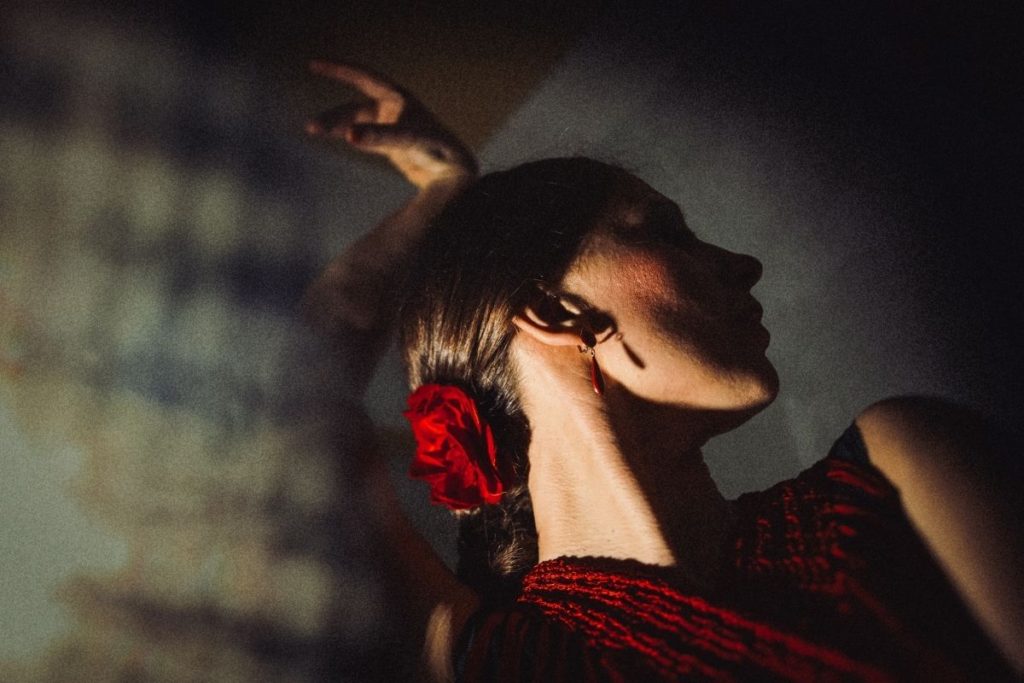
You’ve already got a glims of explanation about what is flamenco, the flamenco dance, flamenco instruments, and flamenco guitar. We’ve discussed the Flamenco dance origin a little, and now it’s time that we learn a little bit about flamenco artists, clothing like flamenco dress, flamenco shoes, flamenco skirt, and we find out what is flamenco dancing about. We’re going to discuss where to find a flamenco show, and also who is the best flamenco guitarist.
1. Sevillanas
Sevillanas is the flamenco dance style that most people dance. It’s less flamenco and more a composition between flamenco and Andalusian folklore. This form is composed of 4 Sevillanas with their own lyrics, which always have the same duration and same dance structure (paseillos, pasadas, confrontations, and auction).
If you want to understand what is flamenco dancing, and how Sevillanas is different from the other flamenco dance styles, watch the below video. Keep an eye on the flamenco shoes as well!
2. Alegrias
The Alegrias flamenco dance origin is Cadiz, Andalusia. This is the oldest flamenco dance. It is categorized by the musicality of the flamenco guitar tone and it’s a beautiful dance to watch at a flamenco show.
The Alegrias dance sometimes begins with a song entrance before the lyrics, and it’s followed by silence, which is followed by the Castellana and it’s almost always ending with a bulerias de Cadiz or a Bulerias de Jerez. You should also check in the below flamenco video the flamenco skirt the artist is wearing, so you see the difference between this, and the Soleares dress.
3. Rumba Flamenca
A real flamenco fan will surely love the Rumba Flamenca. The flamenco dress, the flamenco dancer costume, and the style of Spanish Flamenco music are different from the others. This “Palo” Flamenco music style is originating in Cuba and was developed in Andalusia in the 19th century.
The Rumba Flamenca is known as the style of music which diverged in the new world and returned to Spain in a new form. This has also its own category like the gypsy rumba ( rumba gitana), the Catalan rumba, and Spanish rumba. Rumba Flamenca is my personal favorite of all Flamenco music forms.
4. Bulerias
What is Flamenco? Bulerias flamenco dance is a passionate one. You can also see in the below video the flamenco dancer costume that’s again a different style they have. Bulerias is a festive cante par excellence and it’s usually used as the culmination of Soleares or Alegrias flamenco dance.
The Bulerias is what it’s called the “end of the flamenco show” which is more cheerful than all the other flamenco dance and flamenco music styles.
5. Soleares
Soleares Spanish flamenco music is one of the most performed styles, which is more a sad and painful piece. The lyrics of the Soleares flamenco music are about sorrow, pain, loss, love, and other themes with deep feelings involved.
Soleares is a really emotional part of a flamenco performance. This is more suitable for women and it’s usually followed by bulerias. If you’re seeing just a Soleares performance, the flamenco dancer costume will mostly be black, which goes perfectly with the melancholic style that also includes flamenco instruments of course, such as the flamenco guitar.
6. Seguiryas
Seguiryas is a sober flamenco dance with a slow rhythm. What is flamenco dancing like when it comes to Seguryas? See below also a piece of a flamenco show to understand more this flamenco dance form.
The fundamental step consists of a rhythmic walk based on dry, sonorous, and cut hits. Seguiryas is a somewhat different flamenco dance and flamenco music style, but it’s still beautiful to watch and experience.
7. Tangos
Beautiful flamenco guitar play, black flamenco shoes, passion, and flamenco artists that unfold a level of elegancy that every flamenco fan will love! What is Flamenco style, the Tangos? Tangos have many styles, and it’s another cheerful style next to Alegrias and bulerias. In the world of flamenco.
Tangos are an Andalusian version of flamenco dance that’s remembering us of the South American tango, especially in the music background but it’s still really different. If you watch the video below, you can hear the similar elements of the flamenco music of Tangos, but yet you can see that the dance is more powerful, and it’s not always performed and two. Also, it gives less attention to the woman-man physical connection, as it does in the Argentine tango for example.
8. Farruca
The flamenco dance of Farruca is coming from Galicia. Another subcategory of Spanish flamenco music is different from the others. This flamenco style is very difficult and it’s mostly danced by men. If women are performing Farruca, instead of flamenco skirt, they are wearing trousers instead. With the Farruca the flamenco dancer costume, shirt, and pants make the movements more visible.
Flamenco Shows in Seville – Suggestions from a Local
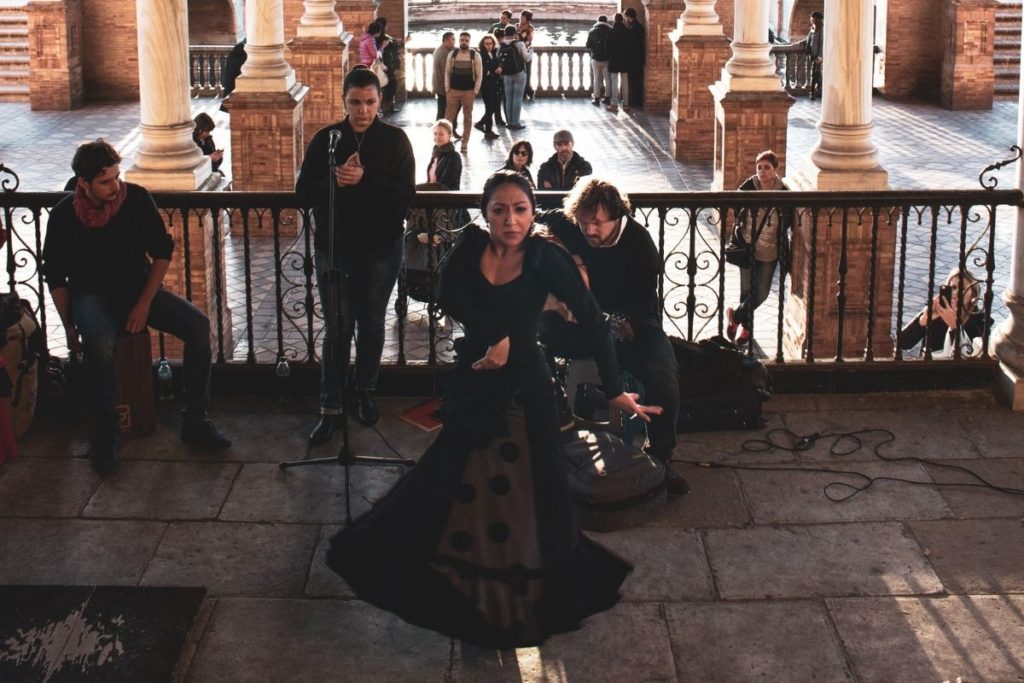
To truly understand what is flamenco, you must see flamenco dance live. So, you must attend a flamenco show. The great part is, that in Andalusia, you can catch flamenco artists on almost every corner in the cities. If you want to hear flamenco instruments, flamenco guitar, well, simply Spanish flamenco music, and see a beautiful flamenco dress, you have to just walk down Calle de Constitucion in Seville.
If you’re a real flamenco fan, I’m sure this won’t be enough for you, and you’ll want to attend a flamenco show. The good news is, that you can find flamenco shows all over Spain, from Barcelona to Madrid, and from Madrid to Valencia and Malaga. But if you’re looking for a show in the home of flamenco, you want to attend one in Seville, Spain. At this point, I’d like to highlight that if you need a great Seville itinerary, we’ve got you covered for that too!
My friend from Seville was kind enough to give me the top 4 flamenco shows that came from locals. Below, you can see the 4 best places for a flamenco show in Seville, as well as their address and websites linked to their names!
El Arenal located in Calle Rodo no 7, Seville.
Los Gallos located in Plaza de Sta Cruz no 11, Seville.
La Carboneria located in Calle Céspedes no 21A, Seville.
Pura Esencia located in Calle Betis no 56, Seville.
Flamenco Instruments – Flamenco guitar and more
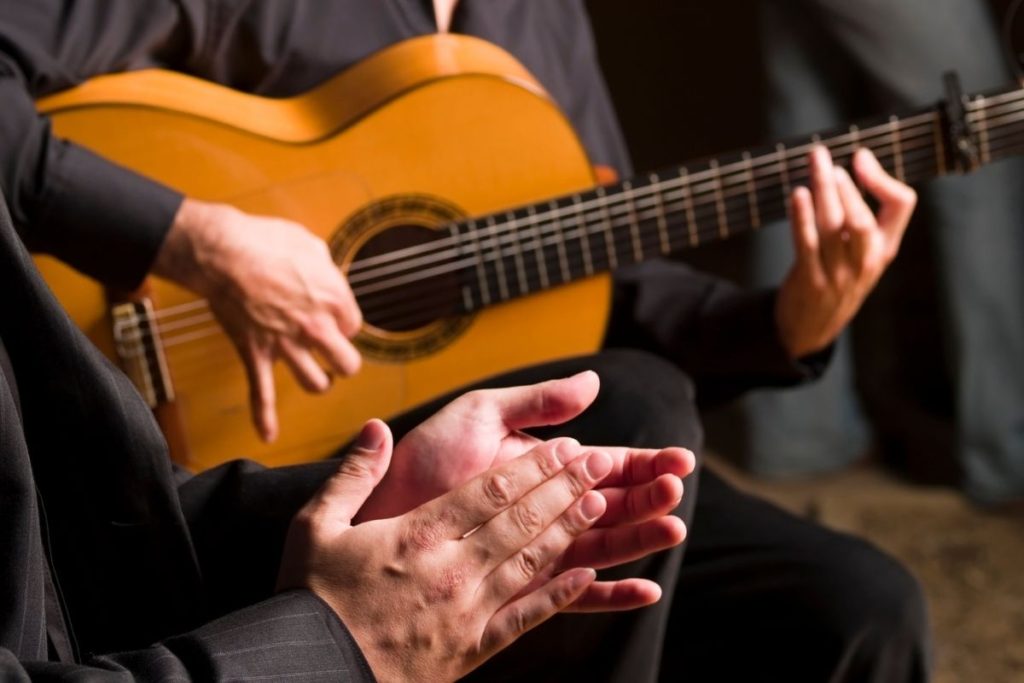
We still need information on what is flamenco in order to truly understand this art form. So, behind the flamenco dance is the flamenco guitar, and well, the flamenco instruments. Flamenco artists, dancers, and musicians go together. And the music behind the dancer/dancers is what makes a flamenco show truly amazing! What you must know, is that the flamenco instruments and specifically designed for this genre.
Flamenco Guitar
The body of a classical guitar is deeper, while the woods are slightly thicker. A flamenco guitar has flat or negative neck relief, helping this make the action very fast at the cost of some buzzing. Also, the strings are closer to the body on a flamenco guitar to facilitate tapping.
Classical guitar
The classic Spanish guitar is used to play the chords and melody. This is usually used near the flamenco guitar to play either the cords or the melody. The classic is followed by the flamenco guitar which is very similar, but different in material, size, construction, and therefore, sound.
Cajon
Cajon, a specially designed box upon which the player sits while slapping the front and top edge to produce percussive sounds. At the back of the Cajon is a hole cut, which helps to release lower notes.
Palillos
Palillos, a hand percussion instrument made from two concave “shells” that are attached by strings. The shells are made of stone, wood, or, more commonly, fiberglass. Much like with claves of other Spanish music, the player strikes the two shells of the Palillo together, often in a repetitive pattern, to create a high-pitched and sharply contrasting clicking sound.
Palmas
Palmas means in Spanish palms or hands. In Flamenco music, the palmas is referring to clapping. It is an essential rhythmic element to the genre for both musicians and dancers. People are clapping to accentuate the important beats of the song or to keep the fast tempo.
And as a last one, the Cantadores. The Flamenco has three elements: dancing, singing, and instrument(s). Cantadores are the singers. One of my favorite singers is Miguel Poveda (see the performance below).
Best Flamenco guitarist
Who is the best flamenco guitarist? The answer is very simple: Paco de Lucia! If you’re a flamenco fan you’ve already known this though. He was one of the best flamenco guitarists, flamenco artists ever. Paco de Lucia’s full name is Francisco Gustavo Sánchez Gómez. He was born in 1947 and died in 2014. He was a Spanish virtuoso flamenco guitarist, composer, and record producer. Paco de Lucia was a leading figure of the new flamenco style, and he also dug into jazz and classical.
He was discovered for his fluent and fast picados, which means fingerstyle runs. De Lucia was a master of contrast. This talent made him one of the most important figures of the evolution of flamenco, and when he played, everyone stopped and listened. An amazing flamenco artist, that I fall in love with too. To listen to one of my favorite pieces from Paco de Lucia, listen to the below song, Entre Dos Aguas.
Flamenco dress – Flamenco skirt – Flamenco Shoes
How it looks and what is flamenco dress about? One of the main components for a flamenco dancer is the flamenco dancer costume, the flamenco shoes, and the flamenco skirt. The Spanish flamenco music comes with stunning dresses and talented artists. When you see a flamenco show you can also notice the many flamenco dress styles.
Flamenco dress
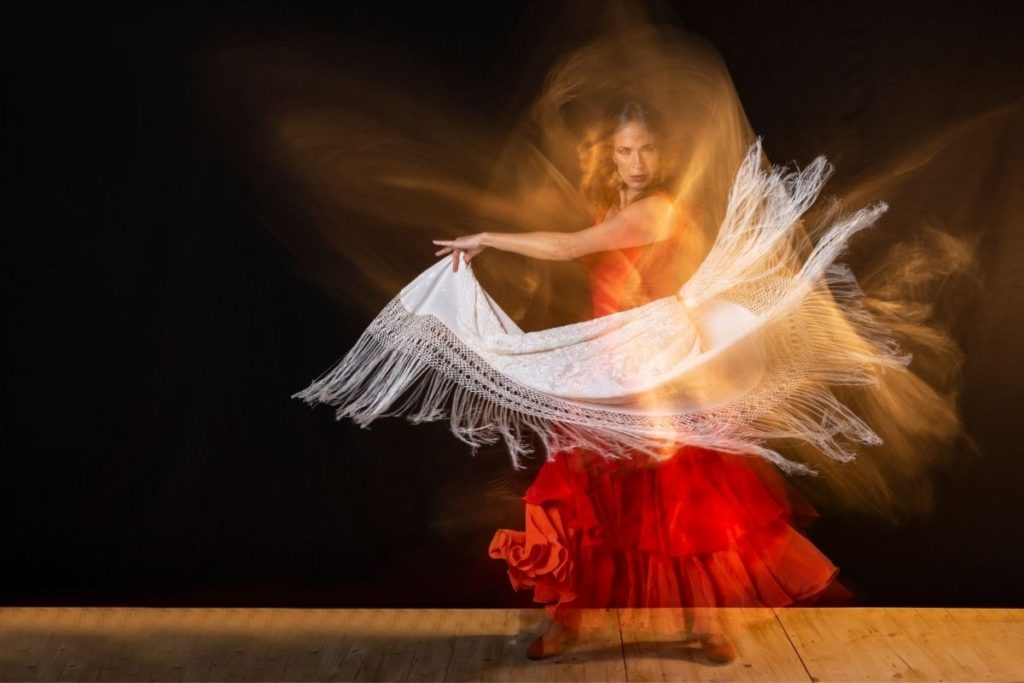
The flamenco dress is called traje de flamenca, which literally means flamenco outfit. If it comes to the so-called “gypsy flamenco” that involves the Rumas Flamenca for example, their flamenco dress is called traje de gitana, which means Gitana outfit. The flamenco dress is traditionally worn by women at Ferias in Andalusia, Spain. The ferias are festivals that each and every city has traditionally organized during the spring and summer months. The most famous Feria is definitely the Feria de Abril de Sevilla.
The flamenco dress, usually the flamenco outfit is attributed to the Gitanos (the Roma people of Andalusia, Spain), however today it’s generally thought of as the typical Andalusian outfit. The flamenco dress originates in the late 19th century and early 20th century when women vendors dressed in modest calico gowns trimmed with ruffles and came to the fairs along with livestock traders. Then, women coming of the propertied classes simply copied these outfits. Ever since the Sevilla Exposition of 1929 (when the Plaza de Espana was made also), the traje de flamenca has become the official outfit of the event.
Feria de Abril in Seville Spain
The flamenco dress has two different types. One of them is worn by flamenco dancers, while the other style is a day dress. The daytime-worn flamenco dress is a body-hugging dress to mid-thigh that continues in multiple layers of ruffles to the ankle. This day dress makes it difficult to walk in, while dancing is almost impossible.
In the meantime, the dancers’ flamenco dress flares out from higher on the hip to allow freedom of movement for flamenco dancers. Both versions are trimmed with layers of ruffles on both the sleeves and the skirt. The flamenco dress is usually brightly colored, involving red or/and can be plain or patterned. It also involves black though. The most famous flamenco dress pattern is the polka-dotted one that’s called traje de lunares.
The flamenco outfit is completed with a shawl that’s called manton de Manila and it’s worn over the shoulders. A traditional flamenco dancer, to complete the flamenco dance outfit will wear her hair in a bun adorned with flowers, and maybe a decorative hair comb as well.
Wrapping up: What is Flamenco?
We have covered flamenco dance, flamenco guitar, flamenco dress, the Spanish flamenco music, as well as flamenco shoes and flamenco skirt. Also, we’ve talked about Paco de Lucia, the best flamenco guitarist, and flamenco dancer costume, as well flamenco instruments and other flamenco artists. Now you shall know what is flamenco dancing and where to find a great flamenco show.
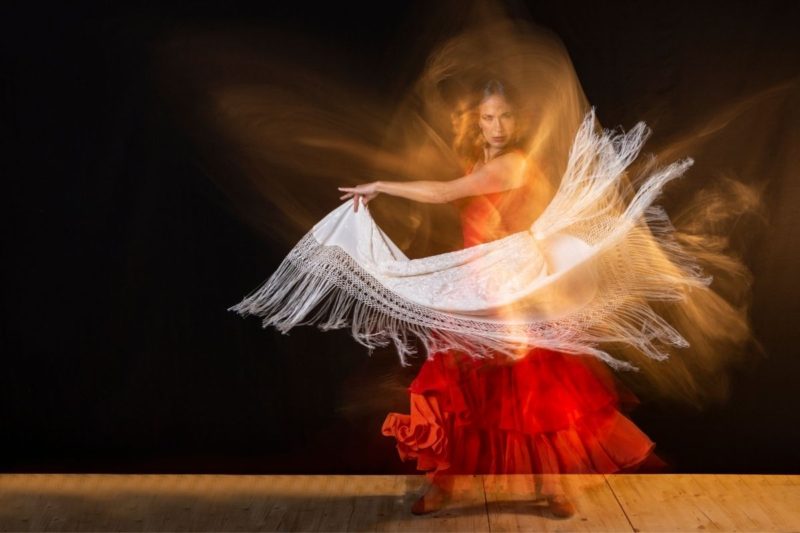
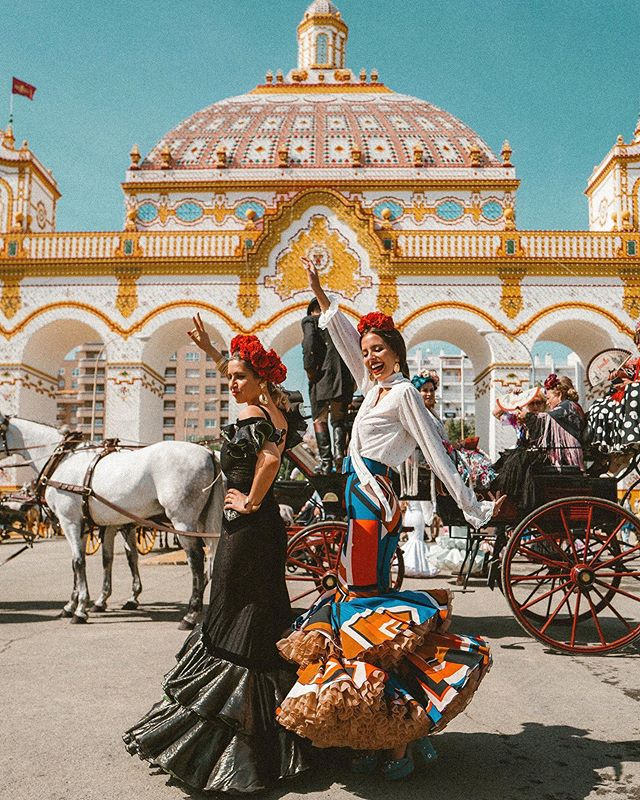
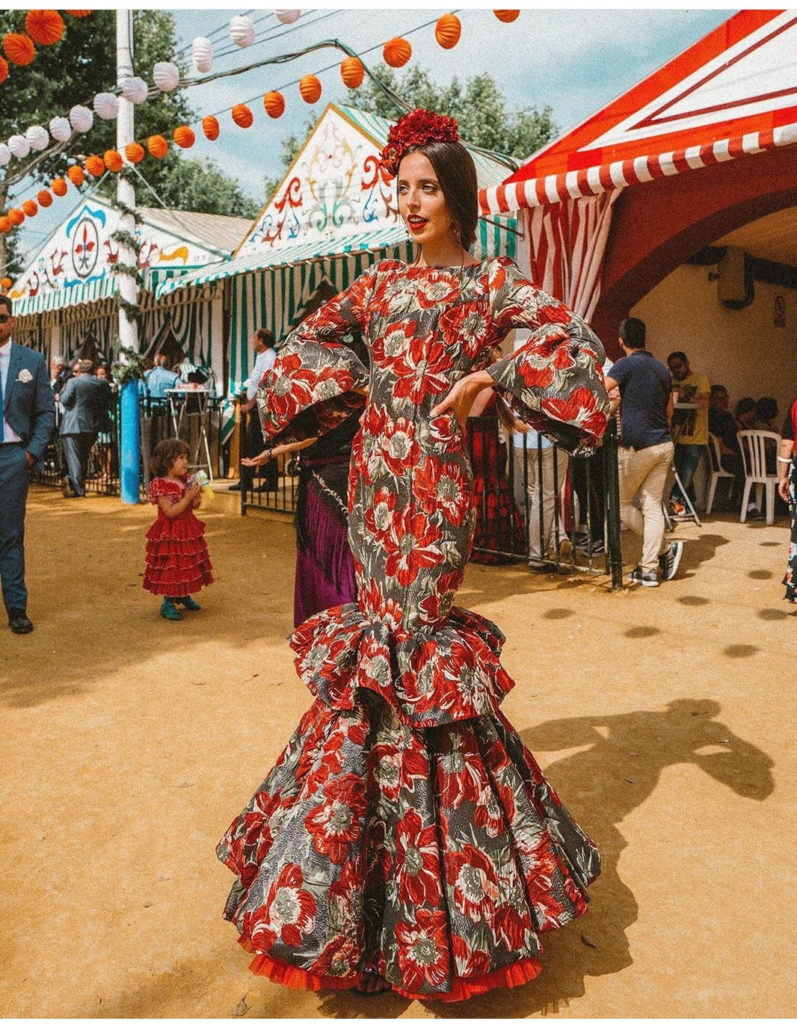
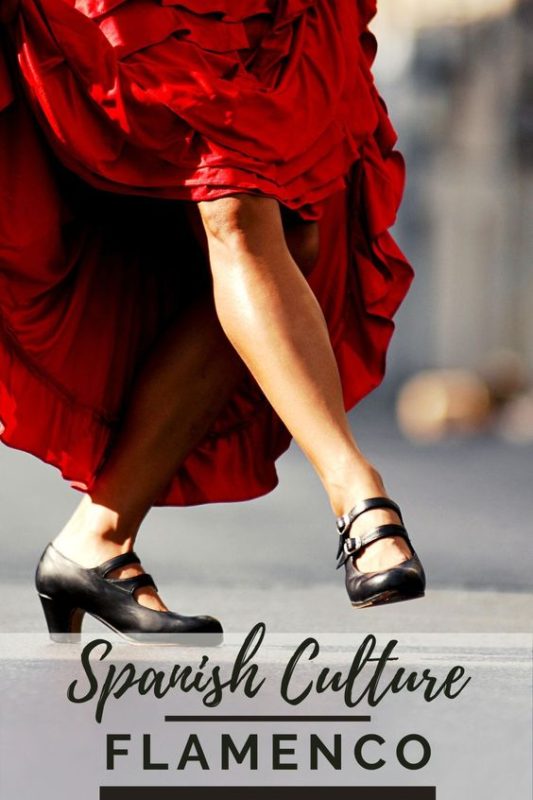
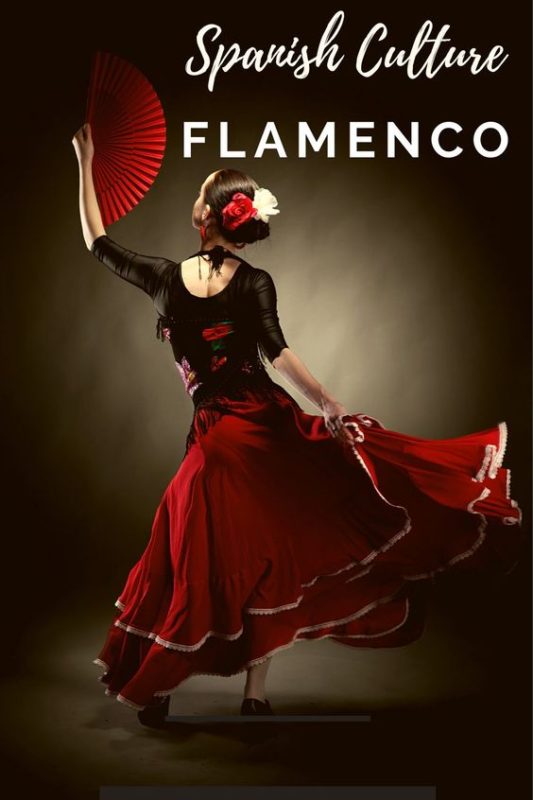
Haha definitely!
Interesting, I need to say somet time and come back here to watch those videos! hahaha
And I actually tried to keep this most as short as possible… There is so much more of the flamenco that we could talk about. Happy you like it, I can’t wait to see a show again!
Oh really? This is soo lovely! Andalucia is the place where I really, really want to move one day! <3
Thank you for sharing this! Can't wait to be back for the feria in Seville, and hopefully catch some beautiful flamenco shows here and there again.
I had no idea there was so much to know about flamenco. I’ve seen it once and loved it. Would definitely go again
This is pretty impressive! I live in Andalucia at the moment and I have been to a few flamenco shows, the non-touristy ones. They were always so emotional and spectacular!
This is so fascinating! I absolutely love everything about it, from the outfits to the music to the dancing itself! Seeing a live performance would be such a cool way to be immersed in the culture!